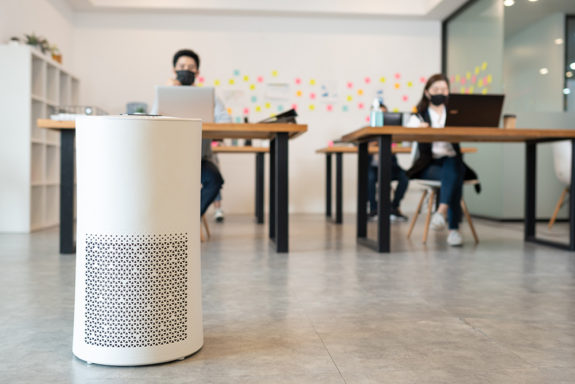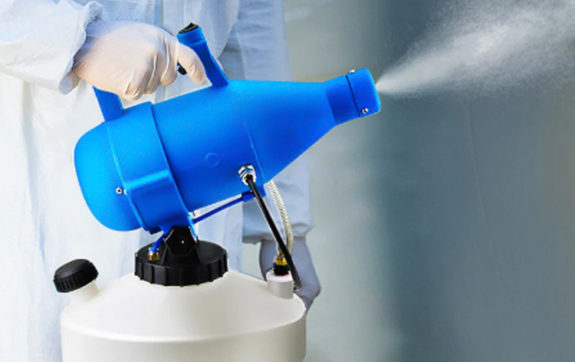As the cold weather approaches, many companies are looking at their indoor air quality plans to reopen schools, offices, etc. A flurry of solutions have entered the market but how effective are they really?
We have always tried to make as many decisions as possible using data and science. It is also really important to make practical decisions based on what you can reasonably manage. The main problem with many of the air quality solutions out there is that you cannot manage their effectiveness without data.
To start the conversation let’s begin with the three most common solutions out there.
Air Purifiers

Air purifiers are often placed inside of space to purify the air. But how much surface area do they actually cover? How effective are they?
The biggest issue about these free standing units is that they work by running localized air through a HEPA filter. That is great if you are sitting right next to the device. However, a clogged HEPA filter or running fan at less than optimal modes could be problematic. The devices are most effectively placed next to a window for taking pollen out the air for those with seasonal allergies. They have never proven to be that effective during cold and flu season.
UV Systems

The fact/ugly truth is that UV light is both lethal to germs and people. UV systems are often placed inside of a ventilation duct in hospitals where no one is actually breathing! On the other hand, these systems are actually meant to be placed in a duct to filter the air. Since you do not want anything getting into a room with someone (patient) whose immune system is severely compromised.
The challenge is that they are often placed after a well maintained HEPA filter in the duct. This allows for large particles to be trapped by the filter and the UV light to kill anything else in the duct. All of this is of course for not someone with germs walking into the room. That is why, hospitals have strict protocols for people entering these types of rooms. Unless your school or office has these same protocols, UV in a duct or running through a filter is not likely to help you all that much.
Most sneezes and coughs result in localized spread inside the breathing space meaning that induct solutions for decontamination are not that effective.
Contact with UV light can lead to burns and melanoma. It is also very dangerous to your eyes, and certainly not appropriate for the faint of heart.
Foggers

Disinfecting foggers are a moment in time solution which are also very complex to use. They use chemicals that are difficult to mix and use and if used incorrectly, can do more harm than good. Although foggers are most effective in small confined locations like an airplane cabin, they are less effective in large spaces.
There is not a great deal of scientific evidence that they are effective in combating COVID or the seasonal colds and flus.
Conclusion
The best solutions are those that move a lot of air. One professor of engineering stated “Once the virus escapes into the air inside a building, you have two options: Bring in fresh air from outside, or remove the virus from the air inside the building.” Everything else will have questionable results.
The only way to know if a plan is effective is to measure air quality before and after. Whether you want to work with an air quality consultant who will do spot check or do real time monitoring, you need to measure your air before making expensive device solution decisions.
You cannot manage what you do not measure.
Better world, cleaner air with Airsset Technologies. For more information, please visit our website at www.airsset.com or contact us at (877) 247-7738 today.